In one word, if I define Kantara: Chapter 1, it is a magnum opus. Louder and more prudent than the first Kantara. I would like to compare it to the Indian version of Apocalypto. Why?

The Apocalypto Parallel
Mel Gibson’s Apocalypto (2006) is more than just a survival thriller set in the Mayan world. In the film, nature feels harsh, but it plays by clear rules. If you’re strong and smart, you survive; if not, you don’t. Human systems, on the other hand, twist those rules.
Slavery, sacrifice, and the hunger for power create cruelty that doesn’t come from nature. The message is that people themselves end up corrupting what was once simple and balanced.
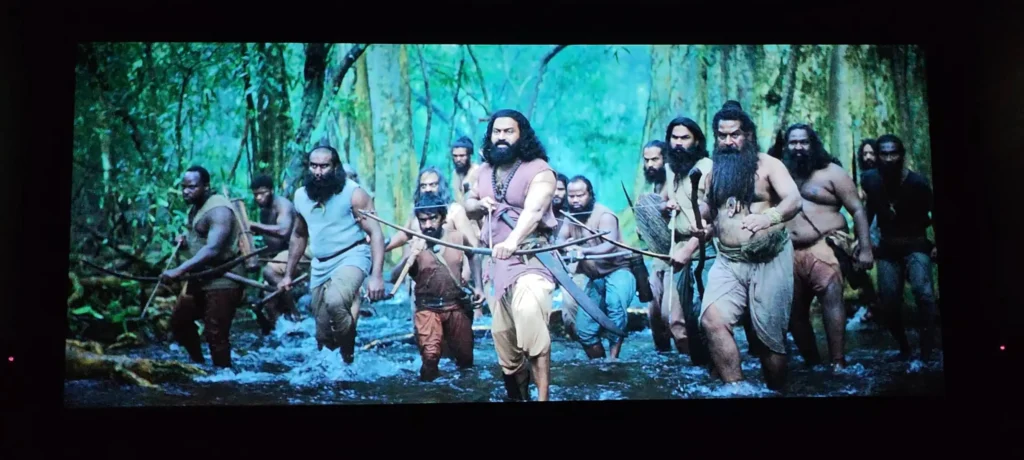
Kantara: Chapter 1 is built on similar lines. On one side, a human system backed by hunger for power and ego—people who believe everything in this world exists for them to hunt and feed, where bloodshed is a hobby.
On the other side, another set of humans who worship every element of nature. They believe the world is protected by gods who appear in the form of tigers, pigs, trees, and land. Kantara is the clash between these two sets of humans.
Tracing the Beginning
In Kantara, we saw Guliga and his power. Here, we are tracing its beginning. The film aims to explore how ancient beliefs, rituals, and conflicts started. It asks: Where does the divine or supernatural tradition come from? How did current struggles arise from those roots?
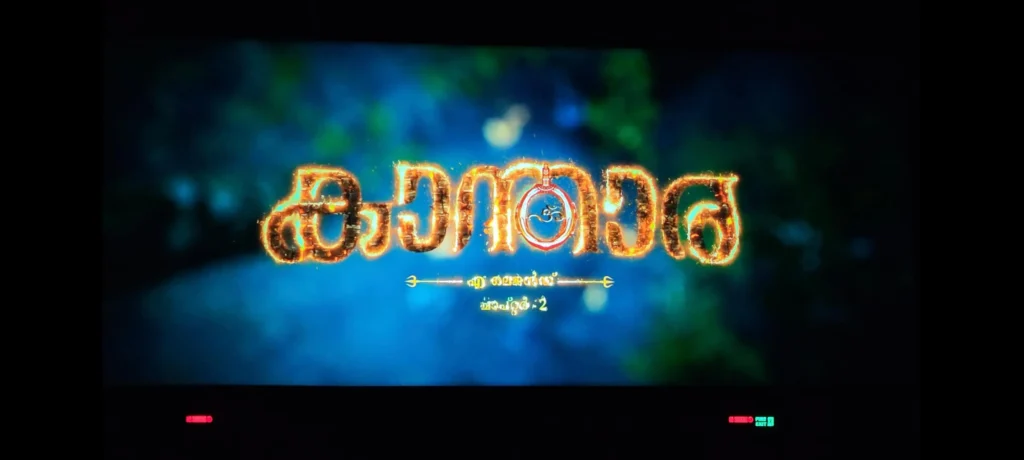
Spiritual or divine forces (through rituals, deities) are not separate from nature—they are entwined with it.
Kantara Chapter 1: Rishab Shetty’s Masterclass
Kantara is a masterclass by Rishab Shetty in world-building, balance between spectacle and story, and creating sync between character arcs and conflicts. The pacing and structure work beautifully for a big-budget entertainment-focused film.
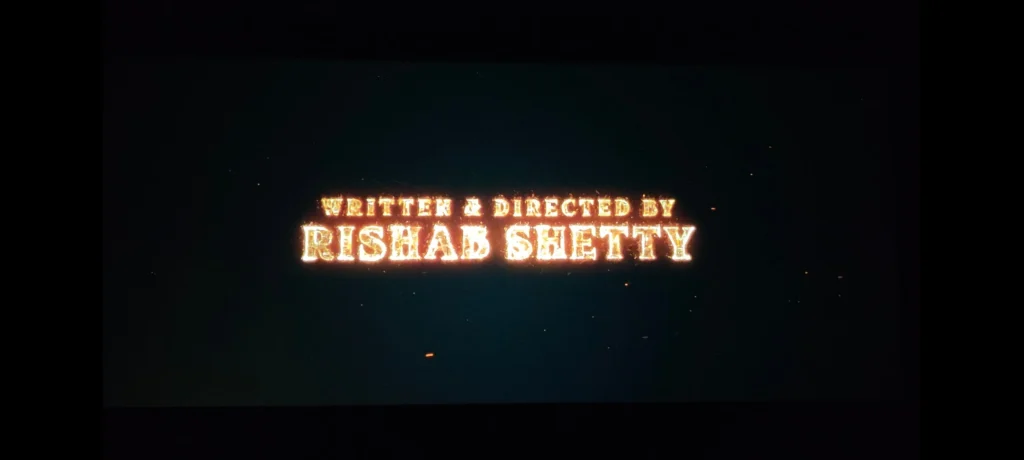
Most importantly, some Telugu directors should learn from him that chanting Sanskrit hymns or just showing Shiva on screen is not how you set up emotional or spiritual resonance. Rishab nails it at its best. The way he established that spiritual and divine forces are not separate from nature—but deeply tied to it—is such a brilliant thought. Sarvam Khalidham Bramha
The World of Kantara and Bhoothaloka
The world of Kantara is inspired by the concept of Bhoothaloka. To understand Kantara Chapter 1, you need to know this tradition first.
In Tulu Nadu, a coastal area in Southern India, people still follow an old tradition called Daiva Aradhane or Bhoota Kola. It is a way of worshipping spirits through rituals, stories, music, and dance. These rituals act like a bridge between humans and the divine. This is the inspiration for Kantara.

“Bhoota” is derived from the Sanskrit bhūta, meaning “spirit,” “past,” or “creature.” However, in Tuluva culture, a Bhoota is not a ghost but a guardian spirit, a powerful being worthy of reverence.
The Ritual of Bhoota Kola
A Bhoota Kola is a night-long ceremony where the spirit enters the human world through a performer. This performer, called a paatri, belongs to hereditary families like the Nalike or Pambada. From a young age, he is trained in dance, songs, and discipline to carry the spirit safely.
Before the ritual, the paatri purifies himself with fasting and celibacy. During the ceremony, his face is painted with bright designs, he wears a skirt of coconut leaves, brass anklets, and a tall headpiece. Music with drums and pipes fills the air.
The pāḍdana, an oral epic in Old Tulu, is sung to narrate the story of the spirit—its birth, deeds, and why it is worshipped there. As the song continues, the performer goes into trance, shaking and convulsing, until the spirit takes over his body. At that moment, villagers believe he is no longer human—he has become the Daiva.
A core belief is that these spirits were once living beings who walked the earth—heroes, ancestors, or animals of totemic importance. Some were human beings who died tragically fighting injustice. This makes the spirit world very personal and ancestral. Tuluvas believe that all people join Bhoothaloka after death. It is very similar to Kerala’s Theyyam concept. This is the answer to why Rishab Shetty’s character vanishes into Bhoothaloka in Kantara.
Guliga: The Enforcer Spirit
Among the hundreds of Daivas worshipped in Tulu Nadu, Guliga holds a position of prominence and fear. He is primal, powerful, and often violent—his role is to serve as the ultimate enforcer of divine law.
The Origin of Guliga
The pāḍdanas of Tulu Nadu tell us how Guliga was born. In Kailasa, the home of Lord Shiva, Goddess Parvati once brought Shiva a pile of ash. Inside was a strange stone. Shiva threw it away, and from that stone, Guliga was born.
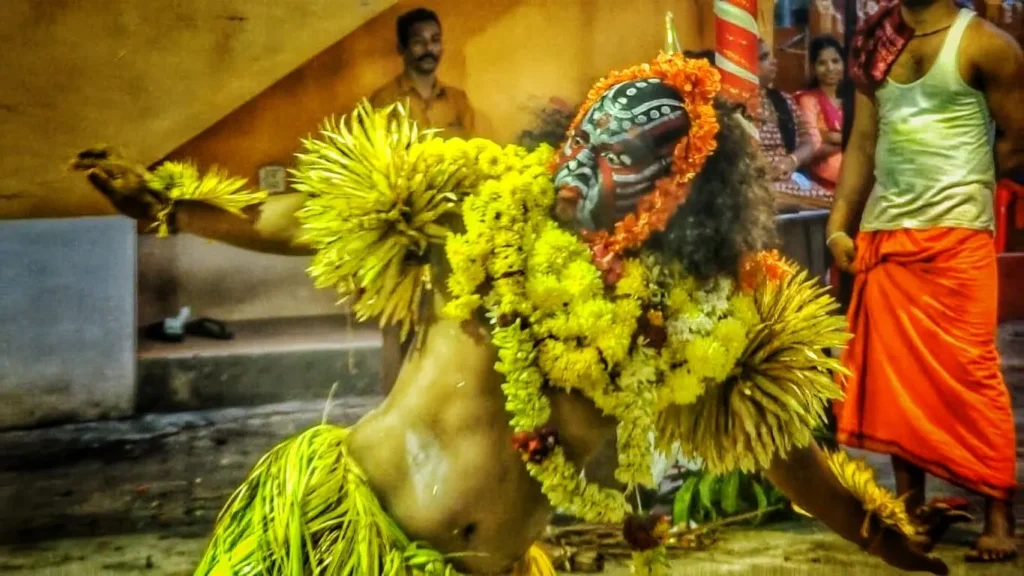
From birth, he was wild. He had two unstoppable traits: endless hunger and violent fury. He tried to swallow the sun, drank Lord Vishnu’s celestial lake, and devoured the blood of elephants and horses. His hunger only stopped when Vishnu offered his own little finger to eat.
But Guliga’s ferocity was too much for the heavens. Vishnu sent him down to Bhoothaloka, the world of spirits. This was not just punishment—it was duty. Guliga was made the Kshetrapala, the guardian of the land, to protect boundaries and watch over people. His story explains why he is both feared and worshipped: a force of chaos tied to sacred purpose.
Guliga’s Role
Because of this, Guliga became the strict enforcer among the spirits. While Daivas like Panjurli protected prosperity and harvests inside the village, Guliga guarded the edges—fields, borders, and family lands. He punishes without mercy, sometimes with death. That is why people fear him but also trust him to uphold dharma.
Shrines for Guliga are simple: just an uncarved stone under a sacred tree. He is older than temples—raw and elemental.
Guliga Kola
The Guliga Kola is one of the most fearsome rituals. The paatri purifies himself, then transforms into Guliga with paint, costume, and dance. The performance is wild and violent—torches in hand, frenzied steps, terrifying presence. Unlike gentler Daiva rituals, Guliga Kola includes raw meat and blood from sacrificed chickens, symbolising his hunger.
When Guliga takes over the paatri, the entire village believes it is no longer a man before them, but Guliga himself—raging, punishing, and protecting.
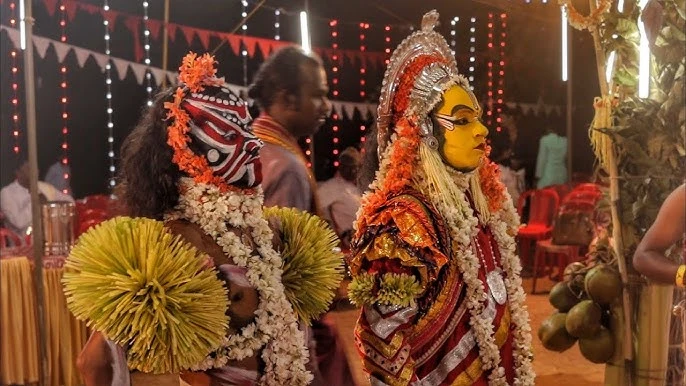
The Many Faces of Guliga
- Rudra Guliga – fierce form, punishing injustice.
- Tantra/Mantra Guliga – linked to fire and esoteric rituals.
- Kathale Guliga – Guliga of darkness and mystery.
- Nethara Guliga – Guliga of blood and sacrifice.
- Agni Guliga – Guliga of fire, with torch rituals.
- Raja Guliga – royal form tied to justice and rule.
- Rahu Guliga – the most violent, linked to chaos and eclipses.
These are not separate gods but different forms of the same primal energy.
The Deeper Meaning of Guliga
Guliga’s story is more than fear. He was born from stone and ash—raw matter, not life. His hunger is chaos itself, strong enough to swallow the sun. The gods did not kill him—they gave his chaos a purpose. He became guardian of the land, punisher of injustice, keeper of balance.
This reflects a deep Tulu idea: order is not built by destroying chaos, but by containing it, honouring it, and making it serve the community.
Chamundi: The Tiger Goddess of Tulu Nadu
Chamundi is another powerful Daiva in Tulu Nadu. She shows how local beliefs merged with big pan-Indian traditions. She is not just borrowed from Hindu scriptures—in Tulu Nadu, she blended with local spirits and became a unique guardian tied to forests and land.
From Chaundi to Chamundi
Long ago, people worshipped Chaundi, sister of Guliga, along with Jattiga and Rahu Guliga. She was one of the oldest Daivas of the land. Later, as Vedic and Puranic ideas spread, Chaundi was linked to Chamundi, a fierce form of Devi, the Mother Goddess. In Mysore, Chamundeshwari became the royal goddess. But in Tulu Nadu, Chaundi did not vanish—she blended with Chamundi, keeping her old roots while gaining new prestige.
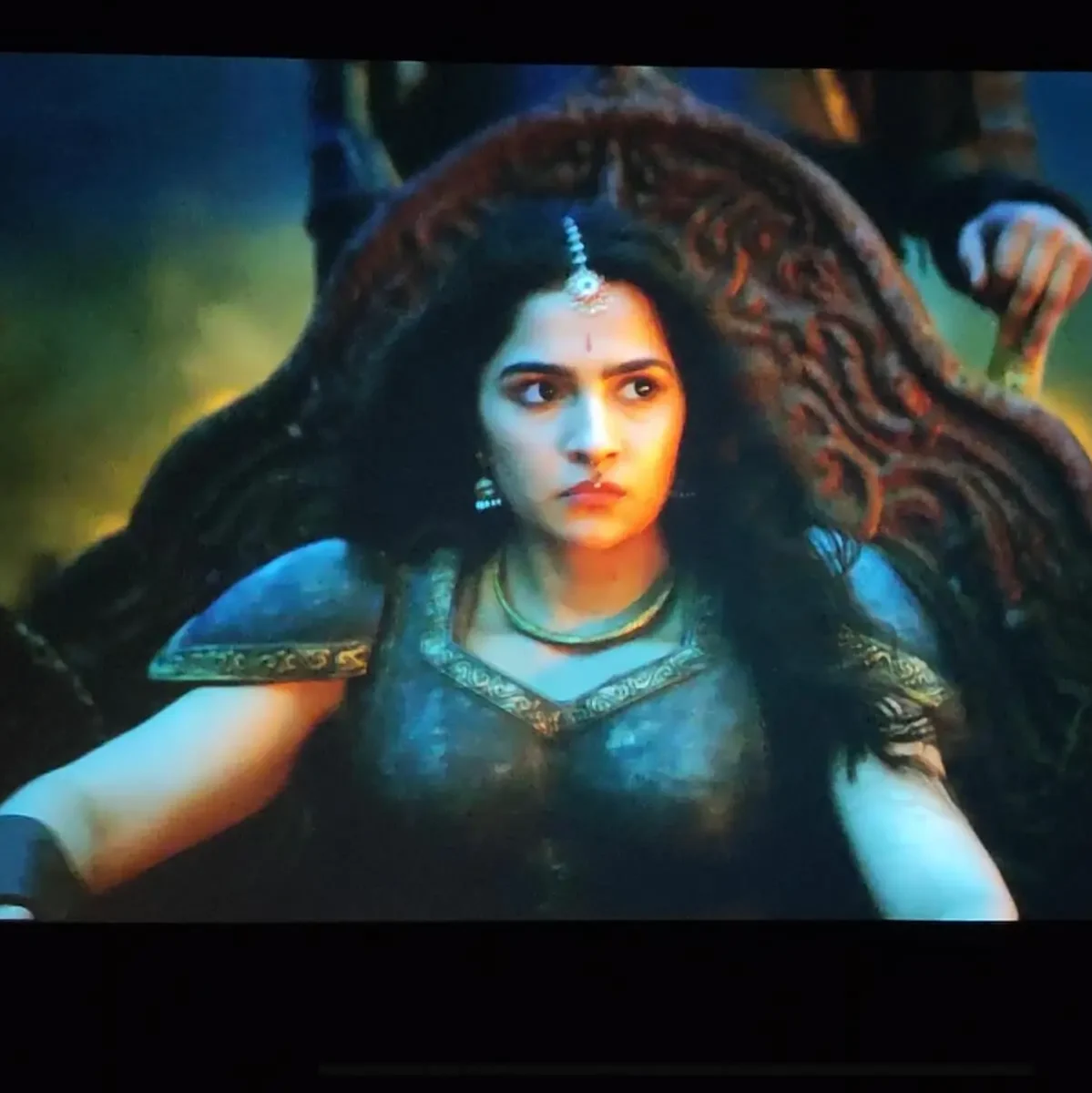
Pilichamundi: Tiger and Goddess Together
The most famous form is Pilichamundi. Pili means tiger in Tulu, and Chamundi is her Sanskrit name. This fusion connects the tiger spirit of Tulu Nadu with the pan-Indian goddess.
Tulu Nadu once had dense forests where tigers threatened people, cattle, and crops. To turn fear into protection, people worshipped the tiger spirit. Over time, this spirit merged with Chamundi. This is ell established in Kantara Chapter 1, with the tiger sequences in the first half.
One pāḍdana says a tiger was born from an egg offered to Shiva and Parvati. The tiger killed Shiva’s cow, and instead of destroying it, Shiva sent it down to earth. There, it became a protector of the same cattle and crops it once harmed.
This theme—wild beings punished yet given purpose—is the same as Guliga and Panjurli.
Thus, Pilichamundi is not just Chamundi riding a tiger. She is the tiger and goddess fused into one. Local people preserved her Tulu name Pili, while linking her with the prestige of the Great Goddess. It was not replacement, but blending. That is why she remains one of the strongest Daivas today.
Final Word
Overall, Kantara: Chapter 1 is a magnum opus—with its visuals, themes, performances, and music. It goes beyond entertainment, bringing alive the ancient spirit world of Tulu Nadu. By blending myth, folklore, and cinema, Rishab Shetty has created India’s answer to Apocalypto, a tale where nature, spirit, and humanity are inseparably bound.
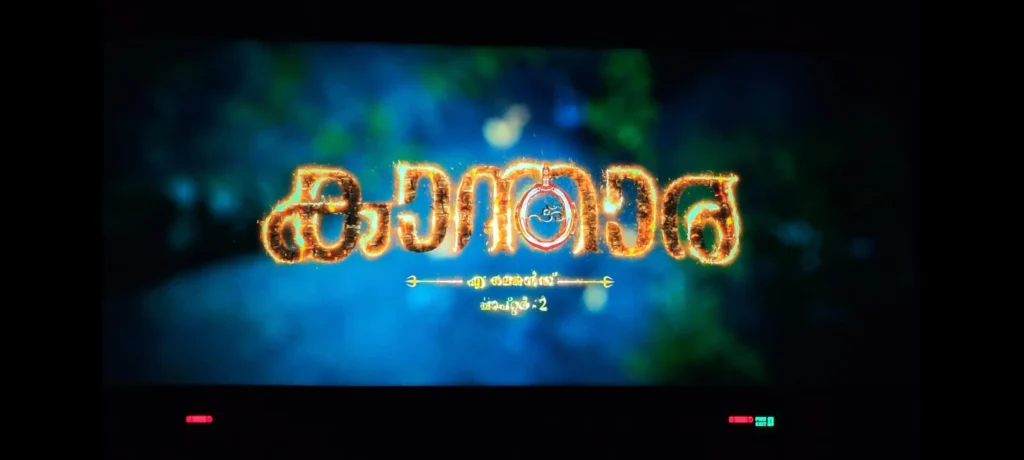
Kantara Chapter 1 is a must watch, and I am eagerly waiting for Chapter 2.